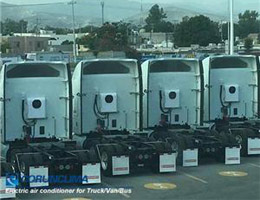How To Flush Ac System After Compressor Failure
AC compressor is likely a prime candidate for failure since it contains the most moving parts and is put under the greatest stresses.
Automotive air conditioning compressors can fail in multiple ways.
Usage of the system over time will cause predictable wear and tear, and eventually, the internal components will leak, not generate sufficient pressure, or in some way be unable to perform their function.This is typically seen in older systems with age and mileage.
Another method of failure, by way of low levels of lubricating oil, be it from a leak or improper service, the compressor can experience accelerated wear, causing deterioration of the internal components, excessive heat, and often sudden seizure of the compressor and immediate ceasing of any function.
Another cause of compressor failure is the intrusion of water into the system. The PAG oil contained within the R-134a system will react with water moisture and create corrosive acid compounds.As these acids circulate within the system, they will literally corrode the system from the inside out. The water can enter via a poor seal/o-ring, or if the desiccant is full of water and has not been properly vacuumed or replaced.
Does a Vehicle AC System Need To Be Flushed When Replacing The Compressor?
If the compressor was replaced due to defect or component failure then a flush is needed. Let’s explore it in greater detail.
If the compressor clutch is the source of compressor replacement or there is some kind of electrical control failure on a newer compressor, then flushing is generally not necessary.
However, if either of these two conditions is the source of failure, you MUST also be sure the aforementioned acid condition from water intrusion has NOT happened.
You may perform an acid test to confirm. If acids are present or you are unable to test, always assume the system needs to be flushed.
If the compressor has failed suddenly due to internal damage or excessive wear, then flushing is especially necessary to remove all metal debris and contaminants. Failure to do so will cause the failure of the newly replaced compressor.
How To Flush AC System After Compressor Failure
There are a few specialized items needed to perform a successful A/C system flush; a pressure cylinder is a primary tool needed for the procedure.
This is a metal cylinder with an air fitting or Schrader valve on top and a hose on the bottom. At the end of the hose is a triggered nozzle to administer the solvent into the system.
Speaking of solvent, that is the only consumable you will need for the process. It is an A/C system-compatible liquid solvent, similar to how brake cleaner is a solvent used on braking systems.
The Procedure
The system must be evacuated of all refrigerants and the component(s) to be flushed must be disconnected from the rest of the system.
The pressure cylinder needs to be filled with solvent, the cap installed tightly, and to be pressurized with shop air.Making sure you have the inlet and outlet to the system open from the rest of the system, you place the nozzle to the inlet of the component.Place an absorbent medium or catch can under the outlet of the component to catch the solvent/debris mixture.You may need to flush in the outlet and catch from the inlet depending on the accessibility of the inlet/outlet and the necessity to remove trapped particles.
When all solvent has been flushed through the system and none remains in the flushed components, you may reassemble the system and prepare for vacuuming and charging.
Now is also a good time to replace any fitting where new o-rings are needed.
Can You Flush Through An Expansion Valve?
No. Unfortunately, there are some AC components that cannot be flushed. The very nature of the expansion valve removes it from flush potential.
The solvent will not pass through efficiently, it will just collect. Because of the very small, precise passages and the pin that slides to open/close the orifice, that make it a candidate for an unsuccessful flush procedure.And, without a fully functioning expansion valve, the system will never be able to make the evaporator feel cold.
If the expansion valve (TXV or orifice tube) are in a system that requires flushing, the expansion valve needs to be replaced with a new unit.
Conclusion
When it comes to vehicle air conditioning systems, there are a great many components at play, all of which may require service in their lifetime.And, there is a variety of ways to make repairs to the system.




